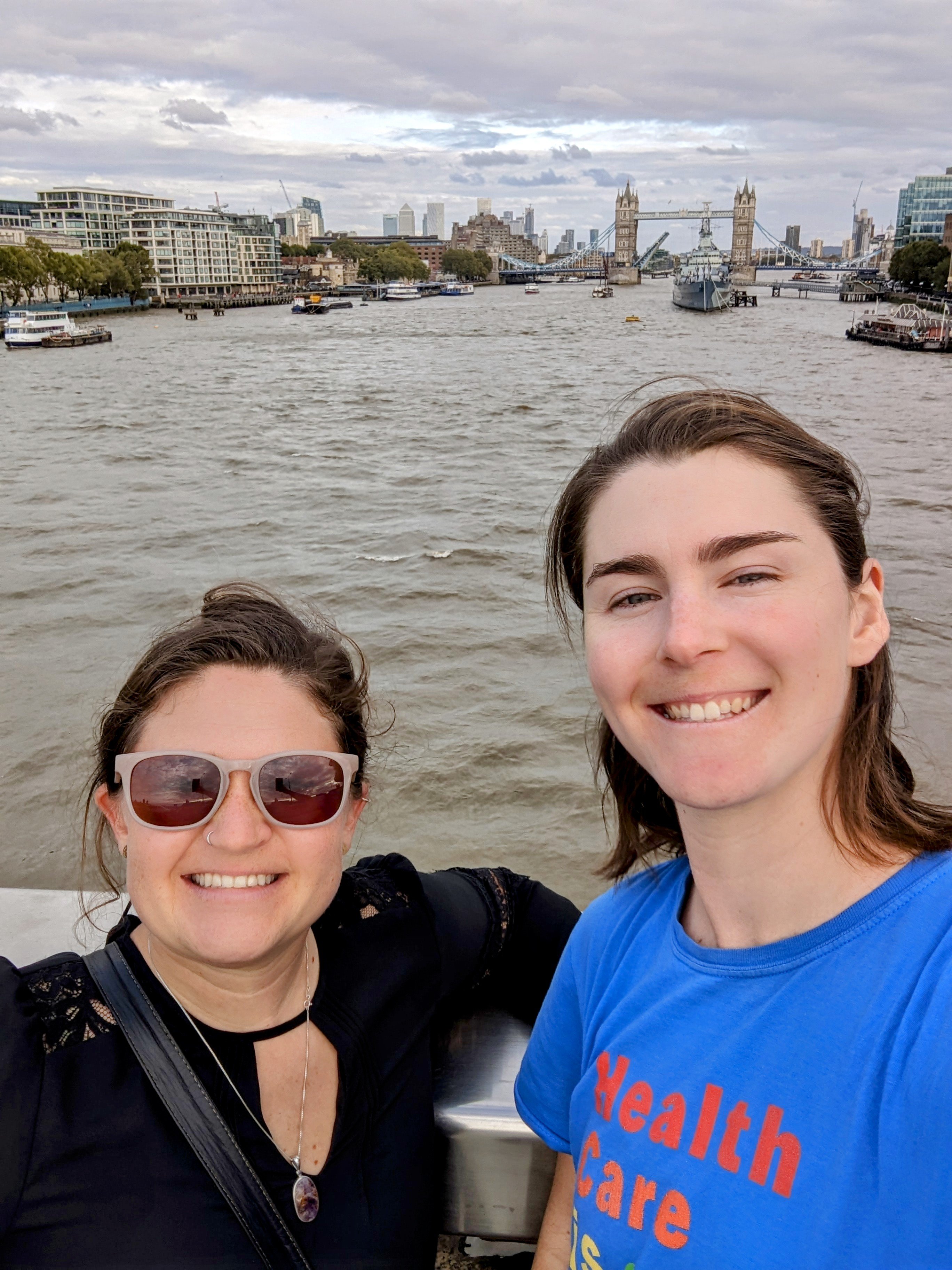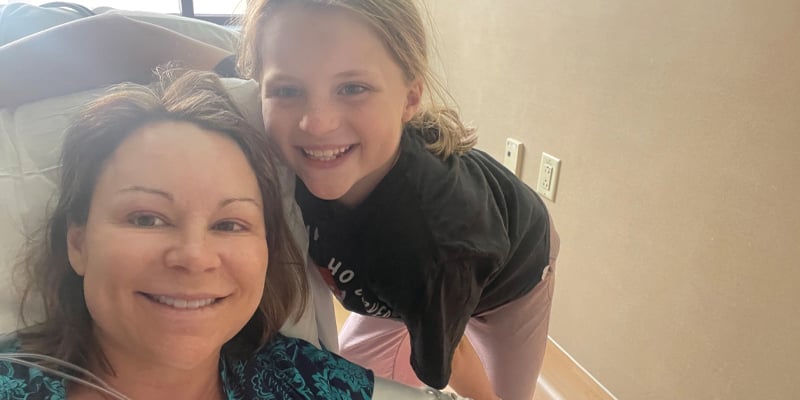The number of people homeless in the Denver metro area has increased nearly 60% between 2016 and 2023, according to the Common Sense Institute. The homeless population is 9,065, compared to 5,728 in 2016.
Where will this population get healthcare? Or get treated for minor wounds?
That’s where street medicine teams come in.
CU Nursing alums Kiera Connelly and Kellie Thompson work the night shift as nurses at Denver Health. On their days off, they volunteer with a street medicine program walking and driving around providing essential healthcare to people in need.

Kellie Thompson and Kiera Connelly in London for the International Street Medicine Symposium |
“There are huge barriers to accessing healthcare across the country and in Colorado,” Connelly says. She graduated from the University of Colorado College of Nursing’s UCAN program in 2021. “When it comes to transportation, someone might need to take a whole day off, you need a phone to schedule or reschedule your appointment, and you also need to have a clinic accept you as a patient, and that doesn’t always happen.”
“Street medicine is going to areas and finding people who need care and providing it to them,” Thompson says. She’s also a graduate of the UCAN program, earning her degree in 2017.
Connelly and Thompson volunteer as street medicine nurses with the Yahweh Health Clinic (YHC), and volunteer with the cities of Commerce City and Thornton to practice street medicine with outreach workers. Volunteers have a backpack full of supplies including wound cleansers, medical supplies, and hygiene products.
Connelly is also one of the founders of the CU Street Medicine Program. It began in 2021. CU’s program also partners with YHC. YHC provides liability insurance to the group, and the clinic’s medical director works on any new guidelines or procedures.
Importance of Nurses in Street Medicine
Connelly and Thompson say most street medicine programs in the United States are doctor-focused instead of nursing-focused.
They brought up the disparity while attending the International Street Medicine Symposium in September in London, England. The symposium had hundreds of healthcare professionals attending breakout sessions and workshops to learn the best ways to expand and implement street medicine around the world.
“We made this presentation to talk about how other programs can incorporate nurses, the benefits of nurse-led outreach, and how to maximize nurse's scope on outreach,” Connelly says. “The scope of nursing ranges around the world, as well as the level of other street medicine programs. We could talk to people for ten or 15 minutes and hear about their program, talk about our program, and see what we have in common.”
Connelly and Thompson’s poster was one of two – out of twenty – that were created by nurses. They focused on the quality caring model. Thompson says one difference between nursing school and a medical school track is that students are trained to think differently.
.png?width=2304&height=3456&name=Nurse-led%20Street%20Outreach%20Offering%20Holistic%20Care%20to%20Rough%20Sleepers%20(1).png)
Thompson and Connelly's poster for the symposium |
“In street medicine, we’re talking about the nurse’s relationship with the patient, with a medical team, a community, and themselves,” she says. “When all those intersect is when the best patient care can occur.”
“The nursing model of patient care is rooted in education and prevention, whereas the medical model of patient care is rooted in diagnoses and treatment,” Connelly says. “With street medicine, you’re literally carrying a backpack with supplies and it’s a limited scope of what you can do. Prevention and education go a long way and that has been lacking in people’s healthcare experiences. It’s a huge part of nursing and it’s beneficial. What we end up doing on the streets is a lot of long conversations and getting people reconnected and refocused on their healthcare.”
“Attending the conference sparked a lot of conversations with other nurses,” Thompson says. “The coolest thing for me was a nursing student from New York came to talk to us, and said our poster was the presentation she was most excited about. She thought it was so cool that we were advocating for the nursing profession. She told us her brother lives in Denver and when she visits, she wants to volunteer with us.”
Future of Street Medicine in the Denver Area
The street medicine group Connelly and Thompson volunteer with received new guidelines right after they returned from London. Currently, the group cannot distribute or prescribe medications and they can’t make diagnoses. These new guidelines are expected to expand the scope of care volunteers can give, including additional testing and providing more medicine.
“We have a bunch of over-the-counter medication that has been approved, and then point of care testing has been approved, so those will be the next steps for us,” Connelly says. “Our long-term goal would be able to do STD testing and we’re working on building a risk reduction program so we can distribute Narcan and have a syringe exchange.”
“After the conference, we provided examples to our medical director of other programs that have expanded guidelines compared to what we have,” Thompson says. “It helped us advocate for our patients by showing other examples from around the world.”
Thompson hopes to increase the number of nurse volunteers for the street medicine program so they can help more patients in need.
“We’re showing people who don’t necessarily have a lot of hope in their lives that someone cares about them,” she says. “A lot of times I can’t fix their problems, or even their medical issues, but seeing if I can answer any questions or just have a conversation with them is honestly a large benefit to a lot of people.”


